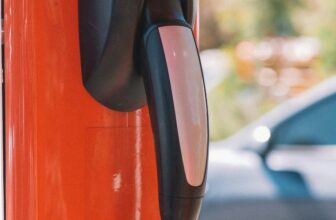Understanding Mobility Scooters and Their Benefits
Mobility scooters are motorized devices designed to assist individuals with mobility impairments, providing them with increased independence and freedom. These devices come in various sizes and styles, from the best compact mobility scooter to the best motorized scooter for adults. Mobility scooters offer numerous benefits, including increased accessibility, reduced fatigue, and improved quality of life for users.
As the popularity of mobility scooters continues to rise, it is essential for users to understand their rights and responsibilities when operating these devices in public spaces. This article will discuss the legal aspects of using mobility scooters, as well as provide guidance on proper etiquette and safety measures to ensure a positive experience for all.
Legal Rights and Regulations for Mobility Scooter Users
Federal Laws and Regulations
In the United States, mobility scooters are classified as disability scooters under the Americans with Disabilities Act (ADA). This federal law protects the rights of individuals with disabilities, ensuring equal access to public spaces and services. Under the ADA, mobility scooters are permitted in any area where pedestrians are allowed, including sidewalks, public transportation, and most businesses.

State and Local Laws
While the ADA provides a general framework for mobility scooter use, state and local laws may have additional regulations. These can include specific requirements for scooter registration, insurance, and equipment, such as lights and reflectors. It is crucial for users to familiarize themselves with the laws and regulations in their area to ensure compliance and avoid potential fines or penalties.

Safe and Responsible Use of Mobility Scooters in Public Spaces
Operating Your Scooter Safely
When using a mobility scooter in public spaces, it is essential to prioritize safety for both the user and those around them. This includes maintaining a reasonable speed, yielding to pedestrians, and using caution when navigating crowded areas. Additionally, users should ensure their scooter is well-maintained and equipped with necessary safety features, such as lights, reflectors, and a horn.

Etiquette and Consideration for Others
Practicing proper etiquette when using a mobility scooter in public spaces is crucial for fostering a positive and inclusive environment. This includes being mindful of personal space, avoiding blocking pathways or entrances, and being patient with others who may be unfamiliar with mobility scooters. By demonstrating respect and consideration for others, mobility scooter users can help promote a more accessible and welcoming community for all.

Choosing the Right Mobility Scooter for Your Needs
With a wide range of mobility scooters available, it is essential to select the best portable mobility scooter that meets your specific needs and preferences. Factors to consider when choosing a scooter include weight capacity, range, portability, and additional features such as storage and seat comfort. Some popular options include the best portable electric mobility scooter and the best motorized scooters for adults.

Additionally, users should consider the availability of mobility scooter parts and accessories, such as seat covers and buzzaround scooter parts, to ensure their device remains functional and comfortable over time.

Transportation and Storage of Mobility Scooters
Public Transportation
Under the ADA, public transportation providers are required to accommodate mobility scooters, provided they meet specific size and weight requirements. Users should familiarize themselves with these requirements and ensure their scooter is compatible with their preferred mode of transportation, such as buses, trains, or taxis.
Personal Vehicles
For those who rely on personal vehicles for transportation, it is essential to consider how to transport and store their mobility scooter. Many scooters are designed for easy disassembly and portability, making them suitable for transport in a car trunk or SUV. Alternatively, users may consider investing in a scooter lift or carrier for their vehicle to simplify the process.
Maintaining Your Mobility Scooter and Ensuring Longevity
Proper maintenance is crucial for ensuring the longevity and performance of your mobility scooter. This includes regular cleaning, battery care, and routine inspections of tires, brakes, and other components. By investing in the necessary maintenance and repairs, users can extend the life of their scooter and continue to enjoy the benefits of increased mobility and independence.
Advocating for Accessibility and Inclusivity in Public Spaces
As mobility scooter users, it is essential to advocate for increased accessibility and inclusivity in public spaces. This can include raising awareness of the challenges faced by individuals with mobility impairments, supporting local initiatives to improve accessibility, and working with businesses and organizations to create more inclusive environments. By taking an active role in promoting accessibility, mobility scooter users can help create a more equitable and welcoming community for all.





